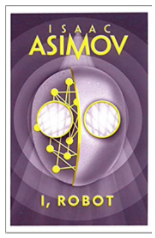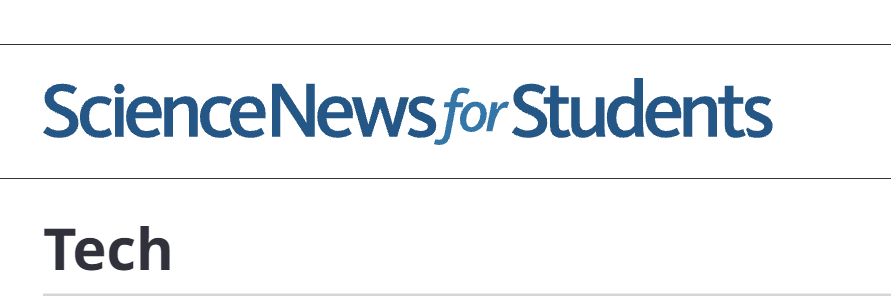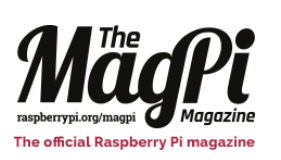Books about Technology
I, Robot - Isaac Asimov

- useful as a follow up for the Yr 8 Artificial Intelligence Topic
- a collection of nine stories regarding humans, robots and morality.
- It introduces Asimov's Three Laws of Robotics.
- The do-it-yourself hobbyist market, particularly in the area of electronics, is hotter than ever.
- This books gives the "evil genius" loads of projects to delve into, from an ultrasonic microphone, to a body heat detector, and all the way to a Star Wars Light Saber.
- This book makes creating these devices fun, inexpensive, and easy.
Engineering and Technology Magazine

- E&T is the IET’s award-winning monthly magazine and associated website for professional engineers, with a circulation of approximately 140,000. It covers all areas of engineering and technology through exclusive news, features, analysis, announcements and job adverts. The printed edition of E&T Magazine is sent to IET members 9 times per year and the digital edition is published 12 times per year.
- The scope of E&T’s coverage is very broad and is aimed at professionals working in all areas of engineering and technology, including the key industry sectors of the built environment, design and production, energy, information and communications and transport.
What students say:

Tech Briefs Website

- Get essential design engineering news, the latest technical briefs, and key industry updates you can also sign up to their newsletter and get these updates automatically.
- Find out about the following topics:
- Medical
- Aerospace
- Defense
- Power Management
- Motion Design
- Photonics & Imaging
- Electronics & Sensors
Science News For Students Technology Topic

- Founded in 2003, Science News for Students is an award-winning online publication dedicated to providing age-appropriate, topical science news to learners, parents and educators. Science News for Students is a publication of the Science News Media Group, which is a program of the Society for Science, a nonprofit 501(c)(3) membership organization dedicated to public engagement in scientific research and education. Science News for Students — which is free to use — helps to fulfill the Society’s mission by connecting the latest in scientific research to learning in and out of the classroom.
- Since 1921, when renowned journalist Edward W. Scripps and California zoologist William Emerson Ritter founded the Society (then known as Science Service), the Society has conveyed the excitement of science and research directly to the public through its award-winning publications. The organization launched its flagship publication in 1921 as Science News-Letter. The publication, which was redesigned as a magazine in 1926, quickly grew into a prime source of science news for libraries, schools and individuals. Renamed Science News in 1966, this award-winning magazine now attracts millions of readers annually to its daily online and biweekly print publications.
Complete Raspberry Pi Magazine

- The MagPi is the official Raspberry Pi magazine. Written for the community, it is packed with Pi-themed projects, computing and electronics tutorials, how-to guides, and the latest community news and events.
- They sit at the intersection of coding and electronics. Inside each issue you’ll find tutorials on subjects like:
-
Home Automation
-
Robotics
-
Artificial Intelligence
-
3D Printing
-
Gaming
-
![]()
- ICON is one of the world’s leading architecture and design magazines, published quarterly in print and sharing news daily online. Established in 2003 in London, we interview the most exciting architects and designers in the world, review the best new buildings, critically explore the most innovative and influential design trends, and review an eclectic range of exhibitions and events.
- Beautifully presented, rigorous and insightful, ICON shows you what’s happening in architecture and design today – and what it means for the future.
Students say:
Article subject; Levi’s launches recycled and recyclable jeans
Interesting facts I found;
-it was reported that the fashion industry accounts for about 8-10% of global carbon emissions
-The materials making up the new 501 jeans align with a single-fibre strategy that enables recycling at the end of the garment’s life
-The new version is made with a mix of organic cotton and post-consumer recycled denim, and is designed to be recyclable.
My thoughts;
Very interesting read, (recommend for people my age), as it teaches us about fast fashion and saving the environment and reducing emissions
-
The Hunger Games
The Hunger Games consists of three books. Therefore, it is a trilogy. The Hunger Games is a series of young adult dystopian novels written by American author Suzanne Collins. The series is set in the Hunger Games universe, with the first three novels being a trilogy following teenage protagonist Katniss Everdeen. The Games are a televised event in which the participants, called "tributes", are forced to fight to the death in a dangerous public arena. The winning tribute and their home district are rewarded with food, supplies, and riches. This is a superb series, with a fantastic amount of detail and varied terminology. The books are 11+. There is also a great movie series to accompany it. There are four movies; the last book has been split as there is too much detail for one movie. The movies are rated 12+.
-
Things a bright girl can do
I am currently half way through this book, but it is an absolutely amazing book to read. It is about 3 girls (Evelyn, May and Nell) that are part of the Suffragettes in 1914. Soon in the book we hear about sexism and homophobia in the early 1900’s and what is was like as woman in those times. Evelyn gets sent to prison and partakes in the hunger strikes, causing her to become very, very ill and her prison sentence cut short. When war is declared, their lives change hugely, Nell’s dad is sent off to war, Evelyn’s husband-to-be becomes a soldier.
-
Suggested reading book review: View from India: Economy to plug into data-driven future
The article is about data lead information and how 5G networks may open up a new horizon in the digital world and what trends in new discoveries to look out for. It talks about how The pandemic has heralded a new digital era. Companies that were not so digitally advanced and preferred manual operations, have had to make an conversion; with little or no choice companies have undergone a makeover and online has become the catchword for many of their processes. Then, those companies that are already digitally advanced, have taken their digital database to a new level. In the middle of all this, there is more and more of these digital applications in almost every segment of the organisation, thereby making them data rich. A data filled environment may lead to new beginnings; in-house teams could develop a data strategy and make sense of the data. This is an exercise in itself, and chat-bots, voice assistants and robots are likely to spring up from it. The data could probably help the company collect more data about their customers and scale-up production accordingly; from warehousing to distribution, data can help improve operations through real-time monitoring, which can scale-up revenue streams. It also focuses on how Chemical-metallurgical engineering graduates tend to opt for IT jobs as they are lucrative; this trend could be reversed if semiconductor jobs become competitive on the salary front. There could be a lot of openings when it comes to semiconductor jobs. For instance, an ecosystem may help fill in the gaps for services and solutions that semiconductors offer. Labs can bring in capability required for the equipment; technology can translate good ideas into use if there is an ecosystem in place along with logistics networks, and fabrication units can accelerate cycles of learning and incubate production capacity to meet the needs of the supply chain. I personally really enjoyed the article because it focuses
-
https://www.sciencenewsforstudents.org/article/innovation-greener-way-dye-blue-jeans-environment
It is about how the way jeans are made uses a lot of unsustainable water and uses toxic chemicals. They use nanocellulose (a natural dye) that is better for the environment and cheaper. It was difficult to make the tough natural dye stick to the fibres of jeans but they used hydrogel to make it work.
-
It is about how a team made a camera lens from a meta-surface and neutral Nano optics to make accurate mini cameras with good camera quality. The team used AI and wrote a computer program that simulated light traveling through a lens and the quality of the picture it created. Then the program tweaked the lens design and ran the simulation again. It shows how AI automatically makes improvements by telling the programmer what photos are clear, and which are blurry.
-
Tiny swimming robots may help clean up a micro plastics mess
I recommend this article to readers who have interest in what the world is doing right now to prevent worse effects of climate change. This article is all about a way The Czech Republic made a new invention(ROBOT)to clean up waste in the ocean. The robot is no bigger than the tip of a sharp pencil and works effectively to clean up the ocean with no trouble. This invention works by searching the area carefully then when it finds any piece of rubbish it will try to destroy the piece and the eventually the plastic is gone. They can’t mistake animas with plastic and have a special sensor for living creatures.
-
https://www.sciencenewsforstudents.org/article/scientists-say-silicon
in this article I have found out that silicon is the second most common element (after oxygen) which is found in the earth’s crust. It makes up about 25%. Silicon is usually not found by itself but with sand, quartz and flint. It also says that it’s one of the most useful elements on earth as it is used to make medical tools and many adhesives. But mainly for electronics like computers and phones. Finally, I remembered that silicon has an atomic number of 14 and contains 14 protons. I know this as it is found on the periodic table.
